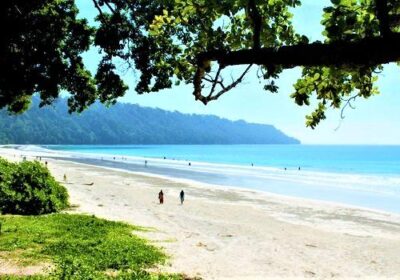Jambu Dwip: A Hidden Gem of the Sundarbans
Jambu Dwip is a small, uninhabited island located in the Bay of Bengal, off the coast of West Bengal, India. Part of the Sundarbans archipelago, this island is a hidden gem known for its untouched natural beauty and rich biodiversity. Jambu Dwip offers an escape into nature’s lap, where visitors can experience the tranquility of the vast sea, dense mangroves, and abundant wildlife. Though lesser-known and less frequented, it holds a unique charm for those seeking solitude and a closer connection to nature.
Mangrove Forests: Jambu Dwip is covered in thick mangrove forests, which are vital for the local ecosystem. These mangroves provide a natural habitat for various species of birds, reptiles, and marine life, making the island a hotspot for biodiversity. The dense forests create a serene environment that is both mysterious and inviting, perfect for nature enthusiasts.
Virgin Beaches: The island boasts pristine beaches that are untouched by commercialization. The golden sands and the rhythmic waves of the Bay of Bengal offer a peaceful retreat away from the noise and chaos of city life. The beaches of Jambu Dwip are ideal for long walks, meditation, or simply enjoying the beauty of the coastline.
Marine and Birdlife
Rich Marine Life: The waters surrounding Jambu Dwip are teeming with marine life, including fish, crabs, and various other sea creatures. The island’s marine ecosystem is a significant part of the Sundarbans’ biodiversity, and it supports the livelihoods of local fishermen who sometimes visit the area.
Birdwatching Paradise: Jambu Dwip is a paradise for birdwatchers, with numerous migratory and resident bird species making their home on the island. The quiet surroundings and abundant food sources make it an ideal nesting ground for birds, providing birdwatchers with ample opportunities to spot rare and beautiful species.
The Solitude of Jambu Dwip
Uninhabited Serenity
No Permanent Settlements: Jambu Dwip remains uninhabited, preserving its natural beauty and tranquility. The absence of human habitation has allowed the island to remain in its pristine state, offering visitors a rare chance to experience nature in its purest form.
Escape from Civilization: For those looking to disconnect from the hustle and bustle of everyday life, Jambu Dwip provides the perfect escape. The island’s remoteness and isolation make it an ideal destination for those seeking peace, solitude, and a deep connection with nature.
Exploring Jambu Dwip
How to Reach
By Boat: The only way to reach Jambu Dwip is by boat. The nearest major port is in the town of Namkhana, which is about 100 kilometers from Kolkata. From Namkhana, visitors can hire a boat to reach the island. The boat ride itself is a unique experience, offering stunning views of the Sundarbans and the Bay of Bengal.
Best Time to Visit
Winter Months (November to February): The best time to visit Jambu Dwip is during the winter months when the weather is pleasant, and the chances of spotting wildlife are higher. The cool temperatures and clear skies make for a comfortable visit, allowing travelers to explore the island without the sweltering heat of summer.
Essential Tips for Visitors
Prepare for the Journey: As Jambu Dwip is uninhabited, visitors should come prepared with essentials such as food, water, and sun protection. There are no facilities on the island, so it’s crucial to be self-sufficient during the visit.
Respect the Environment: Given the island’s fragile ecosystem, it’s important to respect the natural environment. Visitors should avoid littering, disturbing wildlife, or damaging the mangroves. Sustainable tourism practices are essential to preserving the beauty and biodiversity of Jambu Dwip.
Limited Access: Access to Jambu Dwip may be restricted due to environmental protection regulations, so it’s advisable to check with local authorities or tour operators before planning a visit.
Conservation Efforts
Protecting Biodiversity: Jambu Dwip is part of the Sundarbans Biosphere Reserve, and efforts are ongoing to protect its unique ecosystem. The island’s mangroves play a crucial role in preventing coastal erosion and supporting marine life, making conservation efforts vital for the region’s ecological balance.
Sustainable Tourism: To ensure that Jambu Dwip remains unspoiled, sustainable tourism practices are encouraged. Visitors are urged to minimize their impact on the environment and support local conservation initiatives.
Conclusion
Jambu Dwip is a hidden treasure in the Bay of Bengal, offering a rare glimpse of untouched natural beauty and solitude. Its uninhabited landscape, rich biodiversity, and serene beaches make it a perfect destination for those seeking peace and a closer connection with nature. Whether you’re a nature lover, birdwatcher, or simply in search of tranquility, Jambu Dwip provides a unique and unforgettable experience in the heart of the Sundarbans. Discover the untouched beauty of Jambu Dwip and immerse yourself in the serenity of this hidden gem.






Leave feedback about this